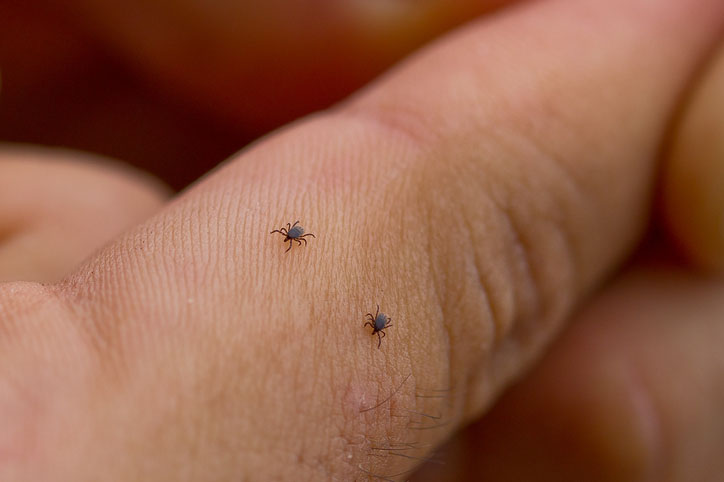Geriatric Diseases of Pet Birds
- Pet Birds
- Overview of Pet Birds
- Management of Pet Birds
- Pediatric Diseases of Pet Birds
- Bacterial Diseases of Pet Birds
- Mycotic Diseases of Pet Birds
- Parasitic Diseases of Pet Birds
- Viral Diseases of Pet Birds
- Geriatric Diseases of Pet Birds
- Neoplastic Diseases of Pet Birds
- Nutritional Diseases of Pet Birds
- Reproductive Diseases of Pet Birds
- Toxicoses of Pet Birds
- Traumatic Injury of Pet Birds
- Miscellaneous Diseases of Pet Birds
Until recently, geriatric medicine has been a neglected area of avian medicine. Infectious diseases, inadequate diets, and poor husbandry meant that most pet birds did not live long enough to develop geriatric conditions. As the knowledge base of avian medicine, nutrition, and proper husbandry has grown, so has the life span of pet birds increased. Most pet birds have the potential to live 20−80 yr, depending on their size (with smaller birds having a shorter life span and larger birds a longer life span). With pet birds living longer, the incidence of geriatric-onset diseases, including cataracts, neoplasia, arthritis, and cardiovascular disease, has increased.
Cataracts
Cataracts occur in many species of psittacine birds as they age, notably macaws, Amazon parrots, and cockatiels. These species may be prone to cataracts or may be overrepresented in the older pet bird population. If the onset of cataracts is gradual, adaptation to decreased vision usually occurs; if not, clinical signs can be depression, inactivity, and reluctance to come out of or move around in the cage.
The eyes of older birds should be examined annually to detect early changes in lens opacity. Because of the small size of the exposed cornea and pupil in psittacines, and the numerous acquired diseases that can occur, screening by an ophthalmologist is recommended. Cataracts often develop secondary to infection or trauma or may be age related. Uveitis may also be present. Additional ophthalmic conditions that may be encountered in geriatric birds are keratoconjunctivitis sicca, corneal ulcerations, third eyelid abnormalities, hypopyon, anterior uveitis, conjunctival granulomas, infection of the conjunctiva (eg, Chlamydia, Mycoplasma, poxvirus), Harderian gland adenoma, and lymphoma.
In large psittacine birds, surgical removal of cataracts is successful in many cases. The bird’s general health and the degree to which the cataracts affect its quality of life should be evaluated before surgery. Commonly used mydriatics are not useful in birds because of the skeletal (as opposed to smooth) muscle found in the iris. In any bird with decreased vision, minimal alteration of the home environment is critical. Early cataracts, especially if uveitis is present, may be painful. NSAIDs, either ocular drops (flurbiprofen) or systemic (meloxicam, celecoxib), or both, can be used to reduce inflammation and pain.
Arthritis
Septic and traumatic arthritis may occur at any age. Septic arthritis is most common in the digits. Osteoarthritis is also common in geriatric birds and can lead to other issues such as pododermatitis if not caught early and treated. The weight of the bird, its general physical condition, previous injuries, and any concurrent medical conditions can all contribute to the onset and severity of arthritis. Concurrent pododermatitis is often present and may be both a cause and result of decreased activity. Malnutrition, which decreases the integrity of the plantar epithelium, and concurrent obesity are often present in affected birds. The cage environment, especially the variety, diameter, and texture of perches, can be important in providing comfort and stability for arthritic birds while preventing or minimizing pododermatitis. If possible, the nails should be left with sharp points to add strength and stability to the grip. Wings should not be clipped, to help with balance.
Clinical signs vary, depending on the location of the arthritis and the severity of disease. Birds may exhibit lameness or be less active. A flighted bird may not want to fly or may not fly as well. The bird may not be perching normally or may fall off perches. Other signs of arthritis are swollen or warm joints, decreased range of motion, feather picking or mutilation, or excessive vocalization.
Diagnosis is based on clinical signs, physical examination findings, and imaging (radiographs or CT scan). Radiographic lesions include narrowing of the joint space, sclerosis of the subchondral bone, misalignment of the joint, and osteophyte formation. CT scans help determine the severity of the bony changes. Commonly affected joints are the tarsus, stifle, and phalangeal joints. The joints of the thoracic limb appear to be less commonly affected.
A multimodal treatment plan is recommended, incorporating both medical and nonmedical modalities. Medical treatment includes the use of NSAIDs, chondroprotectants, and possibly opioids. The most common NSAID used in avian medicine is meloxicam (0.5–1 mg/kg, PO, once to twice daily), a COX-2 inhibitor. Potential adverse effects of NSAIDs are renal ischemia, so they should be used with caution longterm and at the lowest therapeutic dose possible. Anecdotally, glucosamine (20 mg/kg, PO, bid, or 35 mg/kg, PO, once daily or every other day) or polysulfated glycosaminoglycan (5 mg/kg, IM, once weekly for 4 wk then monthly) has been used successfully. The latter should be used carefully, because some birds have had fatal coagulopathies from the injections.
Opioids may be necessary for acute exacerbations of a chronic arthritic condition or for conditions not responding initially to NSAIDs. Tramadol (15–30 mg/kg, PO, bid-qid) or butorphanol (0.5–3 mg/kg, IM, every 4 hr (depending on species of bird), may be used until the NSAIDs take effect.
Additional management includes husbandry changes, a weight loss and exercise plan, a healthier diet (rich in omega-3 fatty acids), and physical therapy. Encouraging flighted birds (without clipped wings) to fly in a safe environment is the best form of exercise. If a safe environment is not possible, encouraging climbing, walking, or even stepping up multiple times can be exercise for parrots. Foraging for food, by putting multiple foraging boxes on opposite sides of the cage or enclosure, promotes exercise. If the bird is overweight, then weight loss is essential, because studies have shown that obesity is a risk factor for osteoarthritis in many species. This may involve converting the bird slowly to a pelleted diet with added essential fatty acids. Fatty acids may have an anti-inflammatory effect and be renal protective. Flax seed oil ( 0.1–0.2 mL/kg/day, PO) is recommended as the best source of fatty acid supplementation for birds. Other husbandry changes, such as changes in perch texture or diameter or padding perches, can be helpful in birds with weak or painful legs or feet.
Articular gout is also common in older birds (see Miscellaneous Diseases of Pet Birds). Differentiation between arthritis and articular gout is critical because of the vast differences in progression, quality of life, and prognosis.
Pododermatitis
Pododermatitis, or bumblefoot, is a relatively common condition of older pet birds. It is a general term for any inflammatory or degenerative condition of the avian foot and can range from mild redness to bony changes. Bumblefoot develops most commonly when birds are either housed with inappropriate perching or secondarily to an injury in one leg, which causes the bird to shift its weight to the other (good) leg and creates increased pressure and potential ulceration on the plantar surface of the foot. Birds most at risk are birds with leg fractures; arthritis of a hip, stifle, or tarsal joint; and obese birds or birds on a poor diet (eg, vitamin A deficiency). These are the same conditions that can predispose a bird to arthritis. Bumblefoot is often a sequela of osteoarthritis. Pododermatitis is a progressive disease. A localized hyperemic lesion develops, followed by ulceration and, if untreated, abscess formation and osteomyelitis. Initially, the skin on the metatarsal and digital pads becomes flattened and smooth. The skin may become proliferative and then ulcerate, allowing bacterial access, which leads to inflammation and infection. As the infection progresses, tendon sheaths become affected, and osteomyelitis and septic arthritis develop.
Birds may present with lameness, depression, and anorexia due to the inflammation, pain, and infection. Diagnosis is based on clinical signs, physical examination findings, radiographs, and culture results. Affected birds should be examined thoroughly for predisposing injuries or illness.
Treatment includes correcting inappropriate husbandry (adding padded perches or perches covered with artificial grass) and conversion to a healthier, preferably formulated diet. Weight loss and exercise should be encouraged in obese birds (flying, climbing, or walking). In early cases, this may be all that is necessary.
As the disease progresses, a bandage may be necessary to relieve the pressure on the lesion. The lesions should be kept clean. Strict sanitation of the perches and feet is important to prevent bacterial infections. If a scab is present, it should be softened and removed or surgically debrided. Antibiotic use should be based on results of culture and sensitivity testing. Staphylococcus spp is most commonly identified; other reported bacteria include Escherichia coli and Proteus spp. Effective antibiotics are amoxicillin/clavulanate (125 mg/kg, PO, tid), enrofloxacin (10–15 mg/kg, PO, bid), and marbofloxacin (5 mg/kg/day) for 10–14 days. Pain management is important and includes a combination of NSAIDs and/or opioids, depending on the severity of disease and after any surgical debridement. One regimen is meloxicam (0.5–1 mg/kg, once to twice daily) along with tramadol (15–30 mg/kg, PO, bid-tid), and, in severe cases or after surgery, butorphanol (0.5–3 mg/kg, IM, every 4 hr, depending on species). Local anesthetics may be helpful after surgery.
Renal Disease
Renal disease may be seen at any age, but older birds are more likely to develop renal insufficiency. Causes are multiple and include glomerulonephropathies, renal tubular gout, and chronic bacterial nephritis.
Clinical signs include weight loss, depression, polyuria, polydipsia, and articular gout. Diagnosis is made based on a persistent hyperuricemia before and after fluid therapy. Imaging (radiographs or CT scan) may demonstrate small or large kidneys with or without mineralization. Occasionally, urethroliths may be seen. Renal biopsy is necessary for definitive diagnosis.
Treatment includes supportive care (fluid therapy) and antibiotics as needed based on diagnostics. Colchicine (0.04 mg/kg, PO, bid) and allopurinol (10–30 mg/kg, PO, bid) have successfully treated certain disease processes. After stabilization, conversion to an appropriate diet should be initiated. Essential fatty acids (omega 3) at 0.1–0.22 mL/kg/day, PO, have been used anecdotally to manage renal disease in birds.
Cardiac Disease
As birds live longer and diagnostic techniques improve, cardiac disease is being diagnosed more frequently. It can be difficult to detect and may mimic other problems, such as respiratory disease. Cardiac disease has been associated with atherosclerosis in pet birds, and potential risk factors are a sedentary lifestyle, a high-fat diet, and hypercholesterolemia.
Clinical signs are weakness, depression or lethargy, increased respiratory rate and effort, or tachycardia. With right-side heart disease, hepatomegaly and ascites are common. Disease also may be subclinical, then present acutely, with the bird arresting when diagnostic tests or treatments are attempted. In birds, right-side cardiac disease is more prevalent than left-side.
Consultation with a cardiologist on any avian patient with suspected cardiac disease is advised. Diagnosis of the cardiovascular abnormality and forming a therapeutic plan requires knowledge of avian anatomy and physiology and a cardiologist’s diagnostic skills and pharmacologic recommendations. Radiographs and cardiac ultrasound can aid in the diagnosis.
The stress of handling can increase intracardiac blood flow velocity 300% in avian patients; therefore, inhalant anesthesia or sedation is preferred over manual restraint for performance of echocardiograms in all but the most docile birds. The equipment necessary for echocardiology in birds includes an ultrasound unit with Doppler function, 100 frames/sec minimum speed, and microcurved or phased array probes with a minimum 7.5 MHz frequency. Anatomic constraints in birds also limit the echocardiograph windows available. Parameters for chamber sizes, blood flow velocities, functional contractility, and valvular insufficiency have been determined for several species, and studies are ongoing in this area.
Reported therapies include enalapril (0.25–0.5 mg/kg/day, PO), furosemide (0.15–2 mg/kg, PO, SC, or IM, once to twice daily), pimobendan (6 mg/kg, PO, bid), and digoxin (0.01-0.02 mg/kg, PO, bid). Although most avian therapeutic regimens are still extrapolated from those used in mammals, numerous reports indicate that cardiac drug therapy can improve cardiac function, thereby increasing the quality and length of life.
Pulmonary Hypertension:
The cardiovascular system of birds differs anatomically and physiologically from that of mammals. The right atrioventricular valve is a single, muscular valve with no chordae tendinae. The physiologic responses that maintain low pulmonary vascular resistance (both vascular distensibility and vasculature recruitment) are absent in birds, resulting in the inability of the pulmonary vasculature to accommodate increased cardiac output by either altering vascular diameter or changing the percentage of vascular channels being used. This may be, at least in part, responsible for the high incidence of pulmonary hypertension syndrome in poultry (see Ascites Syndrome in Poultry) as well as right-side heart disease in psittacines. Studies on the impact of pulmonary hypertension in broiler hens have demonstrated that the response to pulmonary arterial hypertension in chickens involves an increase in two vasoactive substances: a vasodilator and a vasoconstrictor. The vasoconstrictor predominates over the vasodilator in broiler hens susceptible to pulmonary hypertension. For geriatric psittacine patients with pulmonary hypertension, vasodilator therapy should be explored. Macaw asthma may theoretically cause pulmonary hypertension, both from chronic capillary hypoxia and subsequent polycythemia.
Atherosclerosis:
Atherosclerosis is a proliferative lesion of the tunica media and tunica intima of elastic and muscular arteries. Atherosclerotic plaques cause abnormal vascular flow and loss of endothelial integrity. These changes in vessel walls can initiate thrombosis. In birds, lesions are primarily in the aorta and brachiocephalic arteries. Atherosclerosis is common in psittacine birds. It is generally a geriatric condition, except in African grey parrots, in which this disease has been observed in very young birds. Amazon parrots, macaws, and African grey parrots seem to be particularly susceptible.
Predisposing factors appear to include age (most affected birds are 10–15 yr old), sedentary lifestyle, and a high-fat diet. Clinical signs are rarely reported in birds, and the condition is often associated with sudden death. Clinical signs that may be seen are exercise intolerance, dyspnea, episodic weakness, and neurologic signs (eg, seizures, tremors, paresis). At necropsy, grossly thickened arterial walls are seen.
Diagnosis can be difficult. Radiographically, the right aortic arch may be enlarged, with increased density. Lipemia is often present, and marked increases in cholesterol and triglyceride concentrations may be seen. Unfortunately, definitive antemortem tests are lacking.
Medical treatment is anecdotal. A variety of treatments have been advocated to lower cholesterol levels, but none appears to be consistent in its efficacy. Isoxsuprine (10 mg/kg/day, PO) has been used anecdotally with some success. Essential fatty acids (flax seed oil at 0.1–0.2 mL/kg/day, PO) have been advocated and used to reduce cholesterol and inflammation.
Liver Disease
Liver disease can affect birds of any age but is more common in geriatric birds. Hepatic lipidosis is most common, possibly resulting from longterm feeding of an inappropriate (high-fat) diet. Chronic liver disease can result in fibrosis of the liver and decreased liver function and failure.
Clinical signs of liver disease are anorexia, lethargy, overgrown beak and nails with bruising, biliverdinuria, discolored feathers, and, in later stages, ascites. Birds often are overweight or have a history of being obese. Clinical pathology may reveal high liver enzyme levels (AST) and bile acids, a nonregenerative anemia, and high triglyceride and cholesterol concentrations. Imaging (radiographs or CT scan and/or ultrasound) may reveal hepatomegaly or microhepatica. Liver biopsy may be necessary to confirm the diagnosis and determine etiology and prognosis.
Treatment involves supportive care (fluid therapy), antibiotics as needed, and medications to support hepatic function such as silymarin (milk thistle) (100–150 mg/kg, PO, bid) and ursodeoxycholic acid (10–15 mg/kg/day, PO).
- Pet Birds
- Overview of Pet Birds
- Management of Pet Birds
- Pediatric Diseases of Pet Birds
- Bacterial Diseases of Pet Birds
- Mycotic Diseases of Pet Birds
- Parasitic Diseases of Pet Birds
- Viral Diseases of Pet Birds
- Geriatric Diseases of Pet Birds
- Neoplastic Diseases of Pet Birds
- Nutritional Diseases of Pet Birds
- Reproductive Diseases of Pet Birds
- Toxicoses of Pet Birds
- Traumatic Injury of Pet Birds
- Miscellaneous Diseases of Pet Birds





